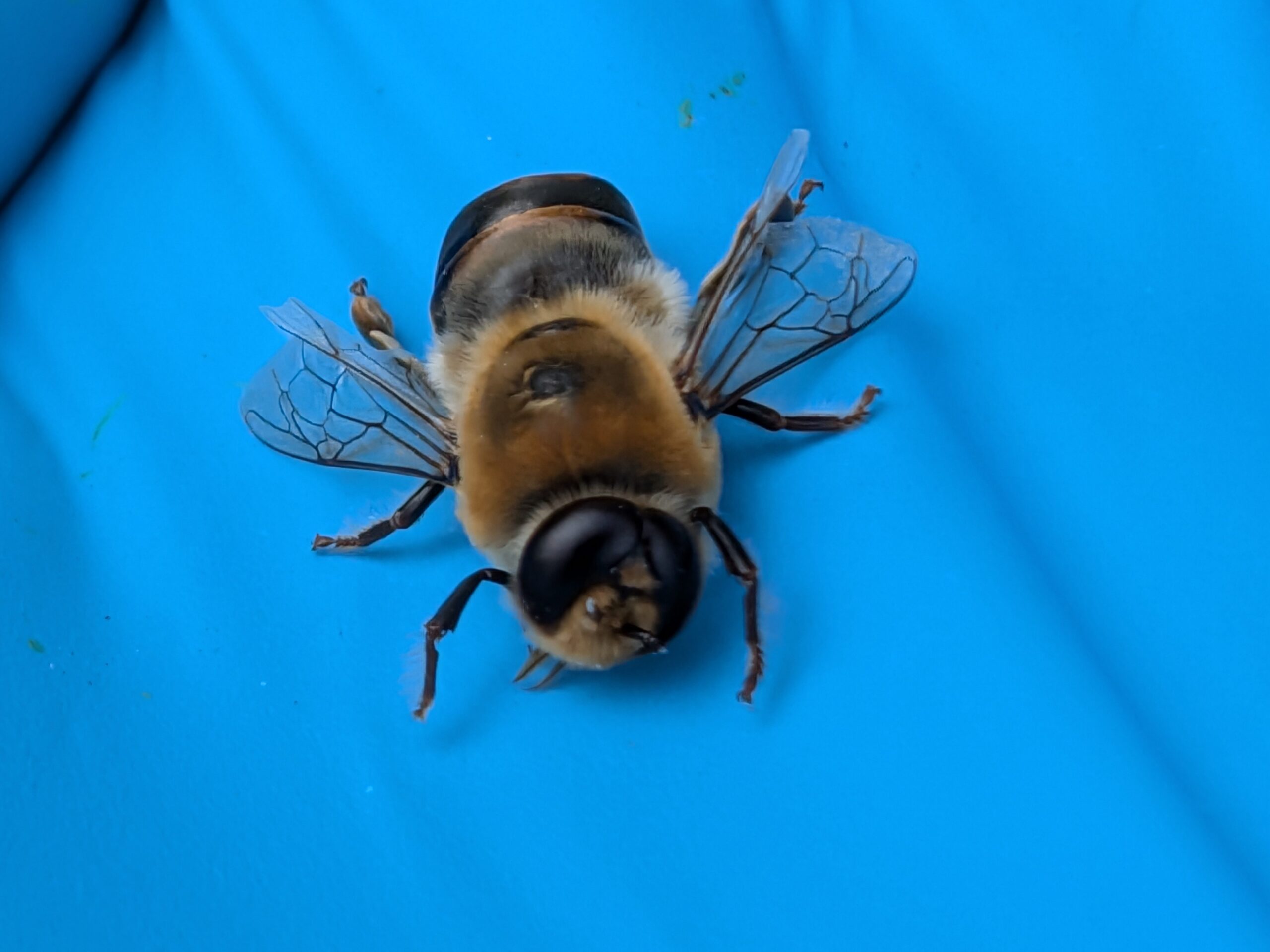Welcome back to the Actual Honey miniseries where we discuss the different types of honey bee! This final instalment will tell the tragic tale of the male bee: the drone.
Drones are the “useless” members of the family. They consume resources that their sisters work tirelessly to provide and they do not forage or complete any jobs around the hive.
To make matters worse, drones can inadvertently cause trouble for their colony even before they’ve emerged from their cells. The males take 24 days to progress from egg to fully-formed bee, whereas the female workers take 21 days. Unfortunately, these extra days present an opportunity for the parasitic varroa mite because, within 3 days, an entire additional generation of mites can be produced, meaning far more are unleashed upon the colony when the time comes for the drone to leave his cell. Consequently, the varroa mite has learned the unique scent of drone brood and seeks it out. There is, at least, a way to capitalise on this misfortune. Knowing that drone brood attracts 8 times as many mites as worker brood means that a beekeeper can make a targeted attack. The beekeeper can inspect the cells to assess the varroa mite numbers and, if they appear to be high, extract and destroy those cells. Destroying capped drone brood with varroa present can halve the varroa mite population within a hive. (Here we have potential drone death #1.)
Are drones worth the trouble? Why does the queen persist in laying drone eggs? Their one crucial purpose is to provide sperm to a queen. Without drones, honey bees would die out, so they are indispensable to the species. But this service is the only contribution they make. Having only one reason for being means that their bodies have evolved to ensure they are equipped for getting it done. Drones are larger than their worker sisters and have huge eyes that take up almost their entire head – all the better for tracking down a lovely virgin queen.
When the afternoon sky is clear, the sun is shining and it’s nice and warm, the drone knows that a pretty queen may be in the mood for love. Not one to say no to an eligible bachelorette, the drone flies to a Drone Congregation Area. As the name suggests, DCAs are a gathering place for men, so they’re the perfect destination for a queen seeking some male attention. DCAs are a mystery to humans because it’s unclear how drones and queens know the unchanging address of this open-air love hotel year after year. Educated speculation suggests that perhaps the locations have particular environmental cues that bees are drawn to, or perhaps magnetic orientation plays a role, but no explanation has yet been confirmed and DCAs remain enigmatic to us. Whatever it is that leads him there, the drone is happy to make the trip multiple times until he finds The One.

Seduction isn’t achieved through meaningful conversation but through being buff. It isn’t that the queen is shallow but that competition for her is fierce and only the strongest bees manage to get near her. A successful drone will spend under 5 seconds with the queen before his endophallus is ripped from his body and left inside the queen. That sounds excruciatingly painful. His fate is to tumble from the sky, dying. (This is potential drone death #2.)
You may be thinking that the drones who fail to fulfil their purpose of mating with a queen are actually the fortunate ones. But no. Not only do they have to endure the shame of not managing to complete the one and only task they had, that nature designed them for, but also their sisters spare them no sympathy. If mating season is over, drones are no longer useful, so the females ruthlessly exile the males. A drone cannot survive independently because he does not possess the means to feed himself or defend himself. Without the care of his sisters, a drone dies alone in the cold. (It’s potential drone death #3.)
As spring approaches again, the queen will produce more drone brood. Ironically, they are born from unfertilised eggs.